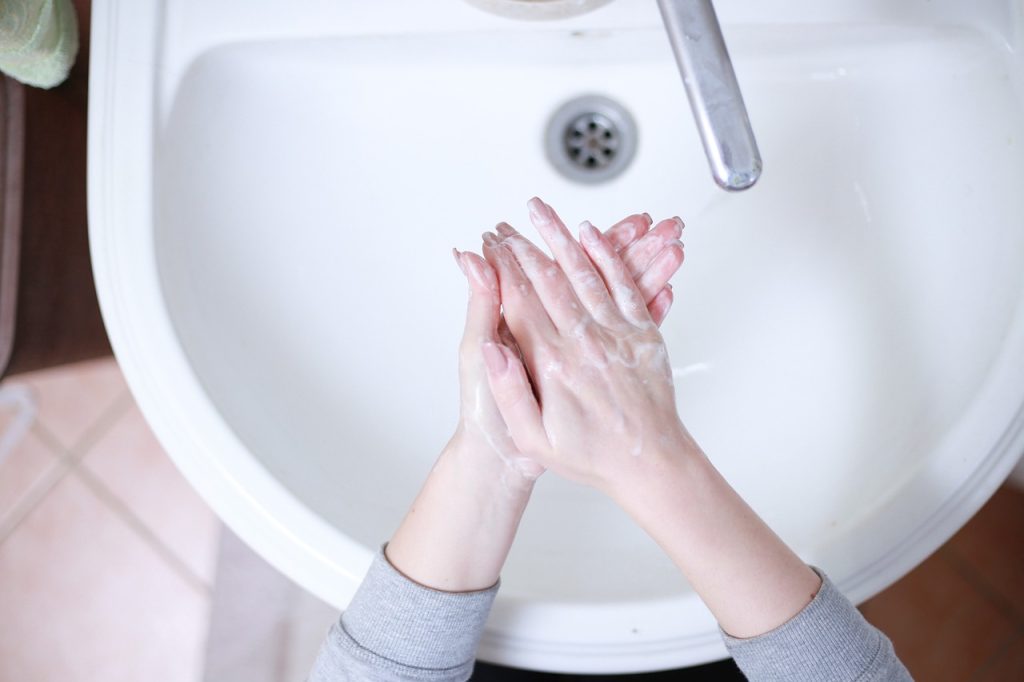Bathrooms are essential spaces in our homes, but they can also be prone to plumbing issues that disrupt daily routines. One of the most common problems homeowners face is bathroom clogs, ranging from minor inconveniences to major headaches. Whether it’s a slow-draining sink or a toilet that won’t flush properly, clogs can cause frustration and damage if left unaddressed. It’s important to be aware of the signs that indicate a clog is forming or has already occurred, so you can take action before the situation worsens.
Ignoring the early warning signs of a clog can lead to more severe plumbing problems and costly repairs. Clogs are often caused by a buildup of hair, soap scum, toilet paper, and other debris that accumulate over time. While some clogs are easy to spot, others can develop slowly and go unnoticed until they cause significant issues. By staying vigilant and recognizing the symptoms of a clogged drain or toilet, you can prevent potential disasters and maintain the smooth operation of your bathroom fixtures.
In this article, we’ll explore the top 10 signs of bathroom clogs you should never ignore. From subtle indicators like unusual noises to more obvious signs like standing water, understanding these warning signals can help you address clogs promptly. Whether you’re a homeowner or a renter, knowing how to identify and respond to clogs is essential for keeping your bathroom functioning properly and avoiding unnecessary stress. Let’s dive into the key signs that suggest it’s time to take action and clear those troublesome blockages.
Table of Contents
Toggle1. Slow Draining Water
Slow-draining water is one of the most common and early signs of a developing clog in bathroom fixtures. Whether it’s the sink, shower, or bathtub, slow drainage typically occurs when debris like hair, soap scum, and other residues accumulate inside the pipes. These substances gradually build up along the pipe walls, narrowing the passage and restricting water flow. As a result, you may notice that water takes longer than usual to drain after using these fixtures. Initially, this issue might seem like a minor inconvenience, but if left unaddressed, it can escalate into a full blockage, causing water to back up and potentially leading to overflow and water damage.
Another critical aspect of slow-draining water is that it can signal more significant plumbing issues within your home’s drainage system. For example, if multiple fixtures are draining slowly simultaneously, it could indicate a clog in the main sewer line. This situation requires immediate attention, as a blocked main line can lead to sewage backup into your home, posing health hazards and causing extensive damage. Therefore, it’s essential to take slow-draining water seriously and investigate the cause promptly. Simple solutions like using a drain snake or chemical drain cleaner might work for minor clogs, but persistent issues may require professional plumbing services to ensure the problem is fully resolved.
2. Standing Water
Standing water in your bathroom is a clear and concerning sign of a significant clog in your plumbing system. This issue occurs when water accumulates and remains in the sink, bathtub, or shower without draining away, indicating that the drain is completely or partially blocked. The presence of standing water can range from a shallow puddle around the drain to a more severe accumulation that fills the fixture. This situation not only prevents you from using the affected bathroom features effectively but also poses a risk of overflow, which can cause water damage to your floors, walls, and any nearby furniture.
The causes of standing water are often related to a buildup of common clogging agents such as hair, soap scum, dirt, and small objects that accidentally go down the drain. In some cases, the blockage may occur deeper in the plumbing system, involving the main drain or sewer line. Addressing standing water promptly is crucial, as stagnant water can become a breeding ground for bacteria and mold, leading to unpleasant odors and potential health risks. Additionally, the weight and pressure of the water can strain your plumbing system, potentially leading to pipe damage or leaks. To resolve this issue, it may be necessary to manually remove visible debris, use a plunger or drain snake, or call a professional plumber for more serious or recurring clogs.
3. Gurgling Noises
Gurgling noises coming from your bathroom drains can be an unsettling indication of a developing clog. These sounds typically occur when air is trapped in the plumbing system, struggling to escape through the pipes. As water flows down the drain, it displaces the trapped air, causing a gurgling or bubbling sound. This can happen in sinks, bathtubs, showers, or toilets, and it is often a precursor to a more severe blockage. The noise suggests that something is obstructing the smooth flow of water, preventing it from moving freely through the pipes. If ignored, these initial signs can lead to more serious issues, such as slow drainage or complete blockages.
Gurgling noises are particularly concerning because they can indicate a problem not only in individual fixtures but also in the main sewer line. If you hear these sounds from multiple drains in your home, it may suggest a more widespread issue within your plumbing system. This could be due to a clog, tree root intrusion, or even a broken pipe, all of which require professional attention. Addressing the problem early can prevent more extensive damage and costly repairs. While some minor gurgling might be resolved by clearing the drain with a plunger or drain cleaner, persistent or widespread noises warrant a thorough inspection by a plumber to identify and fix the underlying cause.
4. Bad Odors
Bad odors emanating from bathroom drains are a clear sign of plumbing issues, often pointing to a clog or buildup within the pipes. These unpleasant smells typically arise from the decomposition of organic matter, such as hair, soap scum, food particles, and other debris that have accumulated over time. As these materials break down, they can release foul gases, which escape through the drains and permeate the bathroom. The presence of these odors is not only unpleasant but can also indicate that bacteria or mold may be growing in the pipes, posing potential health risks.
In some cases, bad odors may be a symptom of a more severe problem, such as a sewer line issue. If the smell resembles that of sewage, it could mean there is a problem with the sewer vent or a clog in the main sewer line, causing sewer gases to back up into your home. This situation is not only inconvenient but can also be hazardous, as exposure to sewer gases can be harmful. Addressing bad odors promptly is crucial to prevent further complications and maintain a healthy living environment. Simple solutions, such as cleaning the drain or using a drain cleaner, may help temporarily, but persistent or particularly foul smells should be investigated by a professional plumber to diagnose and resolve the underlying issue.
5. Toilet Water Level Fluctuations
Toilet water level fluctuations are a common indicator of plumbing issues, often related to a clog or blockage in the system. Normally, the water level in the toilet bowl should remain consistent, rising only temporarily during a flush and then settling back to a stable level. However, if you notice the water level rising unusually high or dropping significantly low after flushing, it could signal a problem. These fluctuations can occur when there is a partial blockage in the toilet trap, drainpipe, or even further down the sewer line, preventing proper water flow and causing inconsistent levels.
Such water level inconsistencies can also result from issues with your plumbing’s venting system. The vent stack, which allows air to enter the plumbing system and helps maintain proper pressure, can sometimes become clogged with debris or obstructed by outside factors like nests or leaves. When the venting is compromised, it can cause improper drainage and erratic water levels in the toilet bowl. Ignoring these signs can lead to more severe problems, such as complete blockages or sewage backups. Therefore, it’s essential to address toilet water level fluctuations promptly. While minor issues might be resolved with a plunger or drain snake, persistent problems should be evaluated by a professional plumber to prevent further damage and ensure the proper functioning of your plumbing system.

6. Multiple Clogs
Multiple clogs occurring simultaneously in different fixtures within your bathroom or home often indicate a more severe plumbing issue, typically involving the main drain or sewer line. Unlike isolated clogs, which might be caused by hair or soap scum buildup in a specific drain, multiple clogs suggest a blockage or restriction deeper in the plumbing system. For example, if you experience slow drainage in both the shower and sink or notice that water backs up in the bathtub when the toilet is flushed, it’s likely that the main drain line is obstructed. This situation can lead to serious problems, as the affected fixtures cannot function properly, potentially causing wastewater to overflow into your living space.
The causes of multiple clogs can vary, ranging from the accumulation of debris, such as grease, hair, and food particles, to more severe issues like tree root intrusion or pipe damage. In some cases, a broken or collapsed pipe can lead to a significant obstruction, preventing proper drainage from all connected fixtures. Addressing multiple clogs requires immediate attention, as they can quickly escalate into a full blockage, resulting in sewage backups and extensive water damage. DIY methods, such as plunging or using drain cleaners, may offer temporary relief but often do not resolve the underlying issue. It’s crucial to consult a professional plumber to accurately diagnose the problem, clear the blockage, and prevent future occurrences, ensuring the smooth operation of your home’s plumbing system.
7. Water Backing Up
Water backing up into sinks, bathtubs, or toilets is a significant warning sign of a severe plumbing issue that requires immediate attention. This phenomenon occurs when the drainage system becomes obstructed, preventing wastewater from flowing out of your home. When the water cannot escape through the main sewer line or drainpipe, it starts to back up into the fixtures connected to that line. This can lead to unpleasant situations such as overflowing toilets, standing water in sinks, and flooded bathtubs, which can cause substantial water damage to floors and other areas of your bathroom.
The causes of water backup can be varied, including a severe clog in the main drain line, issues with the sewer system, or even a collapsed pipe. Such backups can also be indicative of a problem with the venting system, which helps maintain proper air pressure in the plumbing lines. If the vent stack is blocked, it can prevent proper drainage and result in water backing up into your fixtures. Addressing this issue promptly is crucial, as continued water backup can lead to hazardous conditions, including exposure to raw sewage and health risks. Professional plumbing services are often required to thoroughly inspect and resolve the underlying cause of water backup, ensuring that your plumbing system is restored to proper functioning and preventing future occurrences.
8. Frequent Plunging
Frequent plunging of your bathroom fixtures, such as toilets, sinks, or bathtubs, is a strong indicator that you may have a recurring clog or a more serious underlying plumbing issue. While plunging is a common and effective method for clearing minor clogs, having to use the plunger regularly suggests that the obstruction is persistent or significant. Frequent plunging can be a sign that the clog is not just a simple buildup of debris but may involve a deeper blockage in the pipes or drainage system. This constant need for plunging can also lead to wear and tear on the fixture and the plunger, potentially causing damage if the problem is not addressed properly.
Repeated use of a plunger might temporarily alleviate the symptoms, but it often does not resolve the root cause of the clog. The recurring nature of the problem could be due to several factors, including the accumulation of grease, hair, or foreign objects in the pipes, or even more severe issues like a damaged pipe or a major blockage in the sewer line. If you find yourself needing to plunge frequently, it’s important to seek the help of a professional plumber. A plumber can perform a thorough inspection, use specialized tools to clear the obstruction, and provide a long-term solution to prevent future clogs, ultimately saving you time and reducing the risk of further damage to your plumbing system.
9. Overflows
Overflows in bathroom fixtures, such as toilets, sinks, or bathtubs, are a clear and urgent sign of a serious plumbing issue. An overflow occurs when water cannot drain properly and rises above the fixture’s normal level, spilling onto the floor and potentially causing significant water damage. This can happen due to severe clogs in the drain pipes, which prevent water from flowing through the system as intended. Overflows are not only inconvenient but can also lead to extensive damage to flooring, walls, and personal belongings in the affected area, creating a messy and costly situation.
The causes of overflows can vary, ranging from blockages caused by accumulated debris, such as hair, soap scum, or food particles, to more complex issues like a malfunctioning plumbing vent or a severe clog in the main sewer line. In some cases, an overflow can be a result of a plumbing fixture malfunction, such as a broken float valve in the toilet tank. Addressing overflows requires immediate action to prevent further damage and mitigate the risks of mold and mildew growth. While temporary measures like using a plunger or draining excess water may offer short-term relief, a professional plumber should be consulted to diagnose the underlying problem accurately and implement a permanent solution to restore proper drainage and prevent future overflows.
10. Visible Debris
Visible debris around bathroom drains is a noticeable sign that your plumbing system may be experiencing a clog or blockage. When you see hair, soap scum, or other particles accumulating around the edges of the drain, it indicates that these substances are beginning to obstruct the flow of water. This debris can trap more particles over time, exacerbating the clog and leading to slower drainage or even complete blockages. Not only does this affect the functionality of your fixtures, but it can also contribute to unpleasant odors and create an unsightly mess that requires frequent cleaning.
Ignoring visible debris can lead to more severe plumbing issues, as the buildup can eventually lead to a significant obstruction in the pipes. Over time, the accumulation of debris can cause backups, slow draining, and even overflow problems. Regular maintenance and cleaning around the drains can help prevent these issues, but persistent debris or frequent clogging problems should be addressed by a professional plumber. A plumber can use specialized tools to clear the clog, inspect the pipes for any damage, and provide recommendations to prevent future buildups, ensuring your plumbing system remains in optimal condition.
Final Thoughts
In conclusion, recognizing and addressing the signs of bathroom clogs early can save you from more significant plumbing issues and costly repairs. Whether it’s slow-draining water, standing water, or gurgling noises, each sign indicates that there’s a potential problem in your plumbing system that needs attention. By staying vigilant and taking action when you notice these symptoms—such as seeking professional help for persistent issues—you can prevent minor inconveniences from escalating into major disruptions and damage.
Effective maintenance and timely intervention are key to keeping your bathroom plumbing running smoothly. Regularly cleaning drains, avoiding the disposal of unsuitable materials down the sinks and toilets, and being mindful of the early warning signs can help maintain the health of your plumbing system. If you encounter persistent problems or complex issues, consulting a professional plumber is essential for a thorough diagnosis and resolution. Addressing these problems promptly ensures a well-functioning plumbing system and a more comfortable, stress-free home environment.
Say Goodbye To Bathroom Clogs With Garcia Plumbing And Home Restoration!
Are bathroom clogs turning your daily routine into a hassle? At Garcia Home Restoration, we know how annoying and disruptive clogged drains can be. Our expert team is ready to tackle your bathroom clogs with precision and care, ensuring that your plumbing flows smoothly and efficiently.
But we don’t just stop at unclogging your bathroom drains. Our mission is to boost your bathroom’s overall performance and hygiene, making it a space you love to use. Known throughout Contra Costa County for our unwavering commitment to excellence, we bring deep expertise and experience to every job. Our reputation is built on the trust of countless satisfied customers who know they can count on us for top-notch service and lasting solutions.
Imagine a morning where your bathroom functions perfectly—no more standing water in the shower, no more slow-draining sinks, and no more toilet troubles. Don’t let bathroom clogs disrupt your life any longer. Contact Garcia Home Restoration today for the best bathroom drain cleaning services, and enjoy the peace of mind that comes with a flawlessly functioning plumbing system. Experience the difference that expert care and dedication can make!




